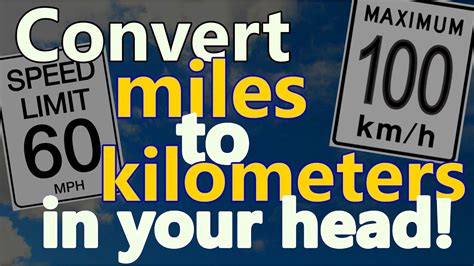How Many Miles Is 180 Km
Kalali
Mar 28, 2025 · 4 min read

Table of Contents
How Many Miles is 180 km? A Comprehensive Guide to Metric-Imperial Conversion
The question, "How many miles is 180 km?" is a common one, bridging the gap between the metric system (kilometers) and the imperial system (miles). While a quick online search will provide the answer, understanding the conversion process and its implications is far more valuable. This comprehensive guide will not only answer the question directly but also explore the nuances of metric-imperial conversions, offer practical applications, and delve into the historical context behind these differing systems.
The Straightforward Answer: 180 km to Miles
180 kilometers is approximately equal to 111.85 miles.
This is the simple, direct answer. However, the journey to understanding this conversion is far more insightful.
Understanding the Conversion Factor
The core of the conversion lies in the relationship between kilometers and miles. One kilometer is roughly equal to 0.621371 miles. Therefore, to convert kilometers to miles, you multiply the number of kilometers by this conversion factor.
Formula: Kilometers x 0.621371 = Miles
Applying this to our question: 180 km x 0.621371 ≈ 111.85 miles.
Practical Applications: When You Need to Know
Knowing how to convert 180 km to miles (or any kilometer-to-mile conversion) has numerous practical applications in various aspects of life:
Travel and Navigation:
- Planning Road Trips: If you're planning a road trip using a map or GPS that uses miles, knowing the equivalent mileage of a distance given in kilometers is crucial for accurate time estimations and fuel calculations. A journey of 180 km translates to roughly 112 miles, significantly impacting travel time.
- International Travel: Many countries still use the imperial system, making conversions necessary when navigating distances in those regions.
- Comparing Car Mileage: When comparing fuel efficiency of cars, often given in kilometers per liter (km/L) or miles per gallon (mpg), conversion is necessary for a fair comparison.
Sports and Fitness:
- Running and Cycling: Many fitness trackers and apps allow you to switch between metric and imperial units. Understanding the conversion helps interpret your workout data regardless of the unit system used. A 180 km cycling race is a significant undertaking, equivalent to about a 112-mile marathon.
- Competitive Sports: International sports events often report results in both systems, requiring understanding of conversions to effectively follow and analyze performances.
Real Estate and Land Measurement:
- Property Sizes: Property sizes might be listed in kilometers or miles depending on the location. Conversion helps in accurate comparisons between properties.
- Land Surveying: Land surveying often requires accurate distance measurements, necessitating conversions between metric and imperial units.
Aviation and Maritime Navigation:
- Flight Distances: Flight plans and distances often involve converting between kilometers and nautical miles, which is a slightly different unit of distance. Understanding the basics of kilometer-to-mile conversion is a crucial stepping stone to understanding these more specialized conversions.
- Maritime Charts: Navigation charts can use either metric or imperial units, requiring conversion skills for accurate location and distance determination.
Beyond the Simple Conversion: A Deeper Dive into Metric and Imperial Systems
Understanding the conversion of 180 km to miles requires understanding the broader context of metric and imperial systems.
The Metric System (SI Units):
The metric system, also known as the International System of Units (SI), is a decimal system based on powers of 10. This makes conversions within the system incredibly simple (e.g., 1 kilometer = 1000 meters). Its simplicity and consistency make it the preferred system for scientific and most international applications.
The Imperial System (US Customary Units):
The imperial system, primarily used in the United States, is a complex system with inconsistent relationships between units. Converting within the imperial system (e.g., miles to feet, yards to inches) requires memorizing various conversion factors.
Historical Context: The Reasons Behind Two Systems
The existence of two major systems of measurement is a result of historical developments. The metric system was developed in France during the late 18th century, based on scientific principles and designed for simplicity. The imperial system evolved over centuries, with units arising from various historical practices and lacking a unifying principle.
Advanced Considerations and Potential Errors
While multiplying by 0.621371 provides a reasonably accurate conversion, slight discrepancies can occur due to rounding. For highly precise applications, using a more precise conversion factor or a dedicated conversion calculator is recommended.
Moreover, using online converters is useful, but understanding the underlying principle remains crucial. Blindly relying on online tools without comprehension can lead to errors, especially in complex calculations or scenarios involving multiple unit conversions.
Conclusion: More Than Just a Number
The answer to "How many miles is 180 km?" is more than just a numerical value. It's a gateway to understanding the fundamentals of unit conversion, the differences between metric and imperial systems, and their practical applications in various fields. Mastering this seemingly simple conversion opens up opportunities for clearer communication, more accurate calculations, and a deeper appreciation for the global standards used in measurement. Remember, understanding the "why" behind the conversion is as important as knowing the "how." This knowledge equips you to confidently navigate the world of distances, regardless of the system being used.
Latest Posts
Latest Posts
-
What Is The Percentage Of 7 Out Of 8
Mar 31, 2025
-
How Many Inches Is 30 Ft
Mar 31, 2025
-
What Is The Boiling Point Of Saltwater
Mar 31, 2025
-
What Are The 2 Parts Of A Solution
Mar 31, 2025
-
What Are The Chemical Equations Of Photosynthesis And Cellular Respiration
Mar 31, 2025
Related Post
Thank you for visiting our website which covers about How Many Miles Is 180 Km . We hope the information provided has been useful to you. Feel free to contact us if you have any questions or need further assistance. See you next time and don't miss to bookmark.
